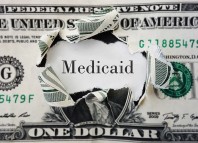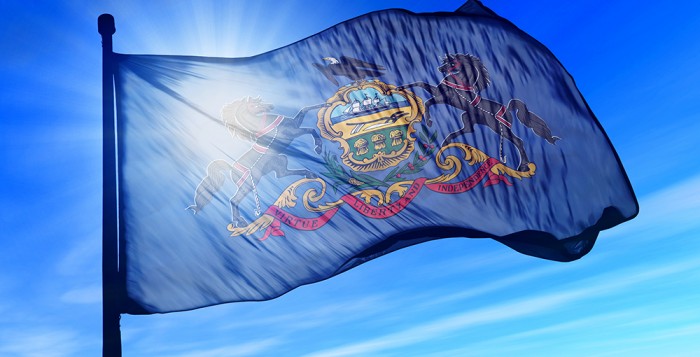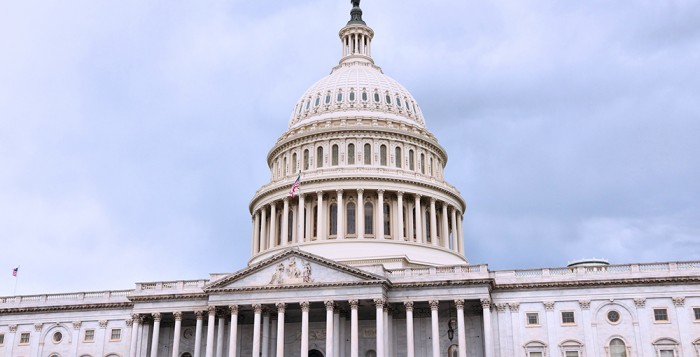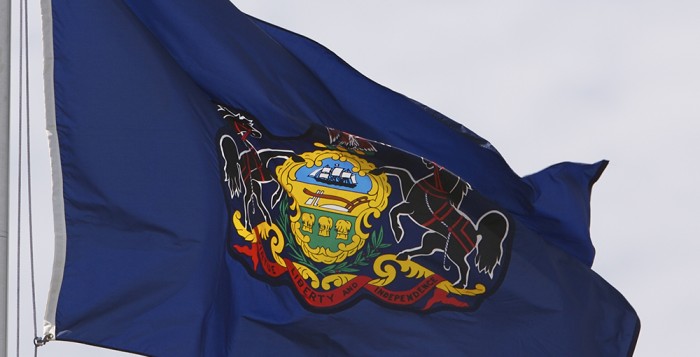Provider Relief Fund General and Targeted Distribution: HHS Post-Payment Notice of Reporting Requirement
On June 11, 2021, the Department of Health and Human Services issued a document titled “Provider Relief Fund General and Targeted Distribution: Post-Payment Notice of Reporting Requirements” to notify Provider Relief Fund (PRF) recipients of the data elements and deadlines that constitute the post payment reporting process. The June 11 PRF requirements establish:
- the deadlines by which recipients are required to use or return funds, and
- the deadlines by which recipients must submit a report on use of funds.
The previous PRF guidance, titled “General and Targeted Distribution: Post-Payment Notice of Reporting Requirements,” was released on January 15, 2021 and is superseded by the June 11 guidance. Principle differences between the guidance are:
- Updated Reporting Times
- Updated Payment Use Periods
- Reporting Requirement Changes
Please see the document provided to us by ANCOR for the information.
Feds Launch Hotline To Help People With Disabilities Access COVID-19 Vaccines
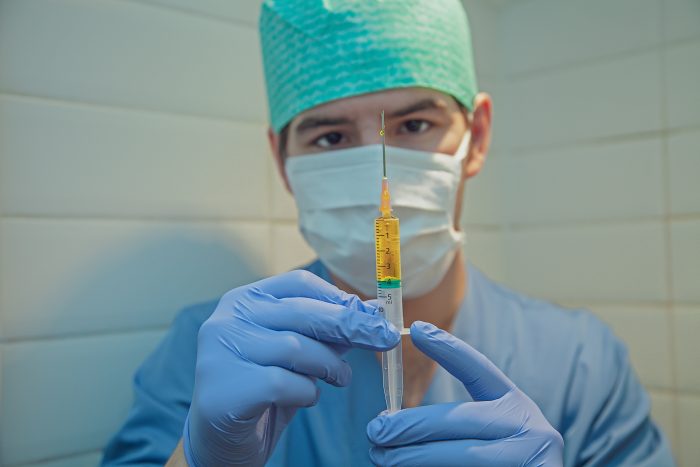
Bipartisan Group of Senators Introduces $40 Billion Bill to Close the Digital Divide
The RCPA PAC 2021 Golf Outing is Back! Sign Up Today
We are pleased to share that the RCPA Conference will be held in person this year! Renew old acquaintances… Make new contacts.
Kick off the exciting Annual Conference week by attending the RCPA PAC Golf Outing on Monday, September 27, 2021. Join the RCPA PAC for a round of golf at the beautiful Hershey Country Club (West Course), 1000 East Derry Road, Hershey, PA 17033. Registration starts at 11:00 am, and lunch begins at 11:30 am, followed by a putting contest and 1:00 pm shotgun start. Register here to participate.
Sponsorships are also available for this worthwhile cause; this is a great way for your organization to receive name recognition and an opportunity to provide much-needed support to the RCPA PAC.
The RCPA PAC supports campaigns of state legislators and representatives who advance our interests on health & human services issues. The funds raised through RCPA PAC can make a difference. Even if you are unable to be a strong financial contributor to our fundraising efforts, many of us have friends and business associates who are interested in supporting the PAC. Getting involved in RCPA PAC not only allows you to help make decisions on who the committee supports but also helps to identify those who will join in our successes.
Direct assistance to the PAC requires a personal contribution; corporation funds can be used to support the event. Please see the Registration Form and the Sponsorship Form for additional information. Further questions may be directed to Jack Phillips, Director of Government Affairs. Thank you for your support of RCPA PAC. We look forward to seeing you on the golf course.
Gov. Tom Wolf Signs Bill to Extend Pandemic Regulatory Waivers
REVISED PRF Reporting Guidance Just Released
From ANCOR:
Hello ANCOR members!
New guidance on the PRF reporting requirements has just been released.
View in browser | Distributed by Center for Medicaid and CHIP Services (CMCS)
Today, the U.S. Department of Health and Human Services, through the Health Resources and Services Administration (HRSA) is releasing revised reporting requirements for recipients of Provider Relief Fund (PRF) payments. This announcement includes expanding the amount of time providers will have to report information, aims to reduce burdens on smaller providers, and extends key deadlines for expending PRF payments for recipients who received payments after June 30, 2020. The revised reporting requirements will be applicable to providers who received one or more payments exceeding, in the aggregate, $10,000 during a single Payment Received Period from the PRF General Distributions, Targeted Distributions, and/or Skilled Nursing Facility and Nursing Home Infection Control Distributions.
“From the beginning of this pandemic, health care providers have gone above and beyond to care for their patients in extremely difficult circumstances that caused significant financial hardship,” said HRSA Acting Administrator Diana Espinosa. “These updated requirements reflect our focus on giving providers equitable amounts of time for use of these funds, maintaining effective safeguards for taxpayer dollars, and incorporating feedback from providers requesting more flexibility and clarity about PRF reporting.”
HHS began issuing notices on post-payment reporting requirements in July 2020. On January 15, 2021, HHS issued updated requirements to reflect language in the Coronavirus Response and Relief Supplemental Appropriations Act of 2021 and opened registration for the reporting portal. Since then, HHS has carefully weighed the rapidly evolving nature of the pandemic and its impact on health care providers and other stakeholders, which is reflected in the revised notice issued today.
The revised reporting requirements supplanting the January 15th requirements can be found here – PDF.
Key Updates:
- The period of availability of funds is based on the date the payment is received (rather than requiring all payments be used by June 30, 2021, regardless of when they were received).
- Recipients are required to report for each Payment Received Period in which they received one or more payments exceeding, in the aggregate, $10,000 (rather than $10,000 cumulatively across all PRF payments).
- Recipients will have a 90-day period to complete reporting (rather than a 30-day reporting period).
- The reporting requirements are now applicable to recipients of the Skilled Nursing Facility and Nursing Home Infection Control Distribution in addition to General and other Targeted Distributions.
- The PRF Reporting Portal will open for providers to start submitting information on July 1, 2021.
Summary of Reporting Requirements
| Payment Received Period (Payments Exceeding $10,000 in Aggregate Received) | Deadline to Use Funds | Reporting Time Period | |
| Period 1 | From April 10, 2020 to June 30, 2020 | June 30, 2021 | July 1 to September 30, 2021 |
| Period 2 | From July 1, 2020 to December 31, 2020 | December 31, 2021 | January 1 to March 31, 2022 |
| Period 3 | From January 1, 2021 to June 30, 2021 | June 30, 2022 | July 1 to September 30, 2022 |
| Period 4 | From July 1, 2021 to December 31, 2021 | December 31, 2022 | January 1 to March 31, 2023 |
These reporting requirements do not apply to the Rural Health Clinic COVID-19 Testing Program nor the two claims reimbursements programs: the HRSA COVID-19 Uninsured Program and the HRSA COVID-19 Coverage Assistance Fund. HRSA continues to encourage providers to establish their PRF Reporting Portal accounts now by registering here. Registration will also allow providers to receive updates closer to the official opening of the portal for their reporting submissions.
For more information, read the materials below:
- HHS Press Release
- Post-Payment Notice of Reporting Requirements
- Provider Relief Fund Reporting Requirements and Auditing
- WSJ article on this announcement
Please contact your RCPA Policy Director for more information.
Free Mandated Reporter Training
The Pennsylvania Family Support Alliance (PFSA) is continuing to offer virtual Mandated Reporter Training at no cost to mandated reporters in Pennsylvania. This three-hour virtual training is approved by the Departments of Human Services, Education, and State and meets all requirements for training on recognizing and reporting child abuse (and includes Act 126 for school employees). It is also approved for continuing education credits under Act 31 (Department of State for health-related licenses) and Act 48 (Department of Education for teachers) at no cost. PFSA will submit your training verification to the Department of State or Education as appropriate on your behalf (details provided during training).
Please register for your preferred training date and time by clicking one of the session links below. Each person must log in through separate devices using the unique access link emailed to them after registration to receive credit. For questions or to schedule a session specifically for your organization, please email PFSA. Please feel free to share this opportunity with others!
Tues. June 15 9:00 am–12:00 pm
Wed. June 16 9:00 am–12:00 pm | Wed. June 16 1:00 pm–4:00 pm
Thurs. June 17 9:00 am–12:00 pm
Tues. June 22 9:00 am–12:00 pm | Tues. June 22 1:00 pm–4:00 pm
Thurs. June 24 9:00 am–12:00 pm | Thurs. June 24 1:00 pm–4:00 pm
Tues. June 29 9:00 am–12:00 pm | Tues. June 29 1:00 pm–4:00 pm
Capitolwire: Gov. Wolf’s COVID-19 Disaster Emergency Declaration Will Come to an End
Capitolwire: Gov. Wolf’s COVID-19 Disaster Emergency Declaration Will Come to an End Once PA Certifies the May 18 Primary Election Results
By Chris Comisac, Bureau Chief, Capitolwire
HARRISBURG (June 10) — Led mostly by the bodies’ Republican majorities, the state House of Representatives and Senate on Thursday approved a concurrent resolution to terminate Gov. Tom Wolf’s COVID-19 disaster emergency declaration.
Additionally, the General Assembly sent to the governor legislation that would to give executive agencies an extension, until Sept. 30 of this year, of the regulatory flexibility they have had under the governor’s COVID-19 disaster declaration for more than a year.
“The people of Pennsylvania have spoken and our members have turned their vote on May 18th into action by exercising the will of the people to immediately terminate the COVID-19 emergency disaster declaration,” said House Majority Leader Kerry Benninghoff, R-Centre, author of House Resolution 106. “With Pennsylvania rapidly returning to normal thanks to a legislative-led vaccine rollout and the need to keep our economy on a track to vigorously reopen, we did not want to wait a minute longer to terminate this emergency disaster declaration that has been responsible for so much economic devastation over the last 16 months.”
Republicans noted Wolf has already lifted nearly all of his mitigation orders, with the masking mandate to end before the end of June, while vaccination rates continue to climb as COVID-19 case numbers and hospitalizations have been dropping dramatically for several weeks – all suggesting the emergency has passed, and it’s now time for the General Assembly and governor to work together to address matters going forward.
The resolution was amended both Wednesday evening and then again Thursday morning (a technical fix to the measure) by the Senate prior to that chamber’s vote later Thursday morning, a 30-20 tally that saw one Democrat – Sen. Lisa Boscola, D-Northampton – join the Senate’s Republicans and Sen. John Yudichak, I-Luzerne, in adopting the concurrent resolution.
In a statement issued following the vote, Senate Majority Leader Kim Ward, R-Westmoreland, said: “Delivering on its promise to the people of Pennsylvania who voted ‘Yes’ on the ballots in the primary election, the Senate officially voted today to end the COVID-19 pandemic emergency declaration. A collective effort by the legislative and executive branches resulted in actions that terminated the current emergency declaration while preserving the health and safety of Pennsylvanians. The extension of waivers provides health care and economic flexibilities to protect Pennsylvania families, especially our elderly and vulnerable populations, while ending the most stringent and unnecessary restrictions still in place since the onset of the COVID-19 pandemic. This vote restores liberty by helping to reinstitute legislative powers throughout times of an emergency by giving the general assembly a seat at the table. Pennsylvanians deserve a government that works for them, and the senate looks forward to continuing to do its part to lead this effort and in the best interest of all Pennsylvanians.”
Senate Democrats, as they did Wednesday evening in committee when considering HR106, questioned the authority by which senators were voting on the resolution when the state has yet to certify the results of the May 18 primary which saw voters approve two constitutional amendments limiting some of the governor’s disaster declaration power and giving the General Assembly the ability to terminate a declaration by majority vote on a concurrent resolution by both chambers.
The results have yet to be certified by the Pennsylvania Department of State, but GOP lawmakers noted that would likely occur during the next few days, since counties had until this past Monday to certify their results to the state agency.
Concerns about the future of programs and services that have been delivered by use of executive order under the authority of the COVID-19 disaster declaration, as well as federal funding providing those services and benefits to Pennsylvanians, were likewise expressed by Democrats who claimed the emergency isn’t over, people are still suffering and it remains unknown if the COVID-19 situation could worsen as it did last year.
Some House Democrats attempted to minimize the importance or meaning of the HR106 vote – which saw eight House Democrats join all House Republicans in adopting the measure 121-81 – with House Minority Whip Jordan Harris, D-Philadelphia, repeatedly saying during his floor remarks before the vote, “This resolution does absolutely nothing.”
And Bill Patton, press secretary for House Minority Leader Joanna McClinton, D-Philadelphia, sent an email to members of the press suggesting that as reporters write about the HR106 vote, “if you happen to reference the May 18 vote on statewide ballot questions 1 and 2 please know that neither one got more than 52% approval (51.7 and 51.8 to be more precise). Slightly higher numbers were reported early on when the counting was incomplete but the latest tally is available here [Pennsylvania Elections – Summary Results (pa.gov)]. While there’s no question about the outcome on May 18, the numbers do still carry some weight. Also please bear in mind these numbers have not yet been certified.”
A source who wished to remain anonymous reacted to the comments about the constitutional amendment vote totals by pointing out President Joe Biden only received 51.3 percent of the national popular vote in the 2020 presidential election, and only 50.01 percent of Pennsylvania’s vote – with both percentages less than what was cast for the constitutional amendments on May 18 (and a slightly greater percentage opposed to Biden in Pennsylvania than those opposed to the ballot questions) – but Biden still won Pennsylvania and he’s still president.
Responding to the floor remarks of Harris and other House Democrats, Benninghoff observed during his closing remarks prior to the HR106 vote, “I think there is a little merit to wondering, at least on my part, why people have spent so much time and energy dialoging about something they say means nothing – how do you fight so much about something that means nothing? It has to mean something.”
The General Assembly’s actions seemed to mean something to the governor and his administration.
“Over the last few weeks the administration has worked hard to educate and inform the general assembly of the risks associated with ending the Covid disaster declaration prematurely,” said Wolf spokeswoman Lyndsay Kensinger in an email reacting to Thursday’s votes. “The governor is disappointed that the Republican-controlled General Assembly has not taken action to extend the disaster declaration. To avoid serious consequences, the administration will do everything it can to work with the federal government to try to maintain federal funding in the absence of a declaration. Now, when the election is certified, and the constitutional amendments become effective, the COVID-19 disaster declaration will be terminated.”
However, Kensinger said the administration welcomed the General Assembly keeping the various COVID-19 waivers put in place by his administration.
“The administration appreciates that the General Assembly agreed with the administration’s recommendations on the significance of keeping the important regulatory suspensions associated with Covid disaster declaration provisions in place,” said Kensinger. “The governor plans to sign the bill.”
The bill in question – House Bill 854 – was unanimously approved by lawmakers in both chambers Thursday, and grants an extension, until Sept. 30, 2021, existing regulatory flexibilities authorized by various executive agencies as part of the COVID-19 disaster declaration.
“Over the past 16 months, Pennsylvania’s regulatory framework has been upended,” said Benninghoff. “As our economy continues to emerge from the effects of government-induced shutdowns and our health care community continues to be reliant on existing flexibilities, I was glad to see both chambers quickly come together to effectively manage the remaining days of the pandemic.”
Regarding HB854, Sen. Yudichak said the bill “protects access to critical federal funding and waivers that benefit health and safety, such as the emergency authorization of telemedicine, temporary staffing at nursing homes and personal care homes, and other staffing issues in health care facilities.
Added Sen. Ryan Aument, R-Lancaster: “While many of the provisions in the Governor’s COVID-19 mitigation orders were overburdensome, arbitrary, and unfair, there were some provisions like the telemedicine waiver that we all agree have improved the lives of Pennsylvanians throughout the last year. We voted today to ensure that these provisions remain in place as our Commonwealth continues to recover and rebuild in the aftermath of this pandemic.”
RCPA Policy Director and Two Legislators Recognized by ABA in PA Initiative
HARRISBURG (June 9, 2021) — The Rehabilitation and Community Providers Association (RCPA) congratulates the recipients of the ABA in PA Initiative’s 2021 award recipients. The ABA in PA Initiative is a nonprofit advocacy organization dedicated to changing the future for all children in Pennsylvania with Autism Spectrum Disorder (ASD) by ensuring access to Applied Behavior Analysis (ABA) therapy via Medical Assistance. Each year, the organization recognizes several individuals who have gone above and beyond for the autism and special needs children’s community. The 2021 award recipients include distinguished legislative advocates as well as the director of RCPA’s Children’s Division.
The ABA in PA Initiative today recognized the following award recipients:
- RCPA Children’s Division Director Jim Sharp received the Pioneer and Key Collaborator Award;
- Representative Lynda Schlegel Culver (R–Northumberland) received the Advocate for Excellence Award; and
- Representative Thomas L. Mehaffie III (R–Dauphin) received the Champion for Behavior Analysts of Pennsylvania Award.
You can view the full press release here.



